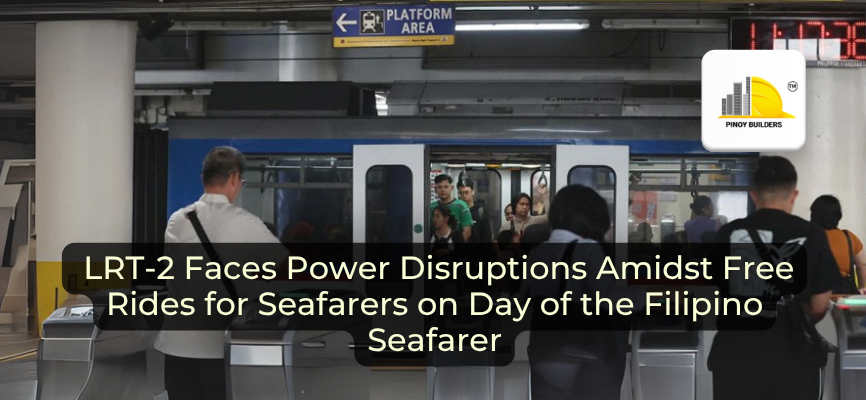With the easement of restriction from the quarantine season and alert level, chances are, Filipinos are now going out non-stop to meet their friends, go to school and enjoy reliving their lives pre-pandemic. This, however, caused a significant effect on the road, where traffic is inevitable, and the only way to combat road congestion is to be patient. With all the mishaps on the road, do non-drivers like us ever wonder how they know who to let in first? Or is it courtesy of people out of empathy? Buckle up and let us look at how drivers should know about the right of way to ease traffic and have a smooth sailing ride on the road.
What is the Right of Way?
First of all, what is the right “Right of Way?”
The right of way is never a decisive move by Filipino drivers on the road or courtesy on other cars to go first but rather is an established system of rules protected and mandated by the law to decide who to go first in a particular situation and place on the road. It is under the Article III Section 42 to 44 of the Republic Act No. 4136. This means that even if you do not know the law and violate these rules for heading out on the road first, your action is punishable at the very least; unfortunately, most Filipino drivers are unaware of this.

This applies to any road user, mainly drivers, motor vehicle users, trains, and pedestrians. Situational areas on the road include crossing points, roundabouts, railway junctions, pedestrian lanes, and various other road features where cars can enter and exit simultaneously. Knowing and establishing guiding rules, such as the right of way, is essential to ease traffic and prevent riders from confronting the road and causing more disturbances.
Right of Way in Homes and Cars: Is There a Difference?
The law above only mentions public roads; how about roads inside villages or suburban areas where no public road is wide enough for an easement? Who is “right” in the right of way? Gladly, the law also provides for safeguarding private properties and roads on who to decide on the right of way; here are the considerations.
When roads in suburban areas are narrow, and sometimes maneuvering vehicles are hard to come by, the right of easement should be imposed, especially when the private property will give the ease of the cars passing; it is up for the owner to decide on who is in the right of way, it is their privilege. But they must first meet the criteria to be able to do so.

As the Art. 649 of the Civil Code of the Philippines states:
- Private land must not be adjacent to or near any public road.
- Must sign an indemnity or compensation contract if there will be accidents in the area
- The private estate must not be blocked for isolation
- The right of way should be the shortest route toward the public road
These considerations are very subjective but do not allow private owners to decide; it is for the people of law to determine the consideration, the correct right of way, and indemnity payments.
Philippine Laws: Right of Way
Here are the guides under the law on which is which in the road:
Intersections
More common junctions in the roads, especially in the Metro, where two or multiple roads meet, and as the road gets bigger, it gets more complicated how to turn when many cars are involved. Ideally, intersections are accompanied by either a traffic enforcer or a traffic light to conduct ease in the way, but what happens when there is no one present?
Always yield or let the other riders go first when you arrive at the intersection; if two cars come simultaneously, the vehicle on the right has the right of way.
Left-turning cars should be allowed to turn first, with proper signaling to avoid confusion. It is essential always to be alert, especially entering larger roads while approaching an intersection.
Note that vehicles are required to always stop at an intersection regardless of traffic, ensure it is safe and clear to proceed, and use signal lights to alert nearby cars. This also applies to railroad crossings.
Emergency Vehicles
The most obvious thing to do, as seen on television and how often we see rushing ambulances on the road, is that drivers must recognize the emergency vehicle’s path because of the emergency – these include ambulances, police cars, and firetrucks. Cars on the road, if possible, pull their vehicles to the side and should stop from forwarding. Never follow an emergency vehicle to ease traffic; it is punishable by the law.
Parking lot and Driveways
The cars on the road with an adjacent parking lot or driveway are in the right of way, and vehicles driving to park or maneuvering in the driveway must wait until the road is clear from traffic.
Pedestrian Crossing
Like intersections, pedestrian crossing areas are usually accompanied by traffic enforcers or lights, especially on school premises and other establishments with public engagements. It is essential to give the right of way to the passengers unless stopped by traffic enforcers. It is never lawful to cut off pedestrians while crossing, although jaywalking is evident in the country.
The safety of the passengers, pedestrians, and drivers is the prime reason for establishing the right of way; it is to protect and safeguard road users from accidents. Although it will not guarantee safety, it provides an added guideline to make the road safer.

Do you want to see more content like this in the future? Subscribe to Pinoy Builders for FREE today and stay in the loop for the latest news and updates on the Philippine construction industry!
Sources:
- Understanding Right of Way. (n.d.). Santos Knight Frank. https://santosknightfrank.com/blogs/understanding-right-of-way/#:~:text=An%20easement%20of%20a%20right
- Jamal, H. (2016). What is Right of Way – Definition & Factors Affecting RoW. Aboutcivil.org. https://www.aboutcivil.org/right-of-way
- PHILIPPINE LAWS, STATUTES AND CODES – CHAN ROBLES VIRTUAL LAW LIBRARY. (n.d.). Www.chanrobles.com. https://www.chanrobles.com/republicacts/republicactno917.html#:~:text=(k)%20The%20%22right%2D
- THE LAW ON EASEMENT OF RIGHT OF WAY. (n.d.). CMS LAW. https://www.cmslawph.com/news-publications/2020/12/20/the-law-on-easement-of-right-of-way
- Beldad, K. (2022, April 20). Right-of-Way Law and the Build! Build! Build! Program in the Philippines. Bria Homes. https://www.bria.com.ph/articles/right-of-way-law-and-the-build-build-build-program-in-the-philippines/
- Miguel, C. (2021, November 17). Right of Way: A helpful guide for Pinoy drivers. Philkotse.com. https://philkotse.com/safe-driving/ra-10752-the-right-of-way-act-philippines-helpful-guide-for-all-pinoy-drivers-5362










